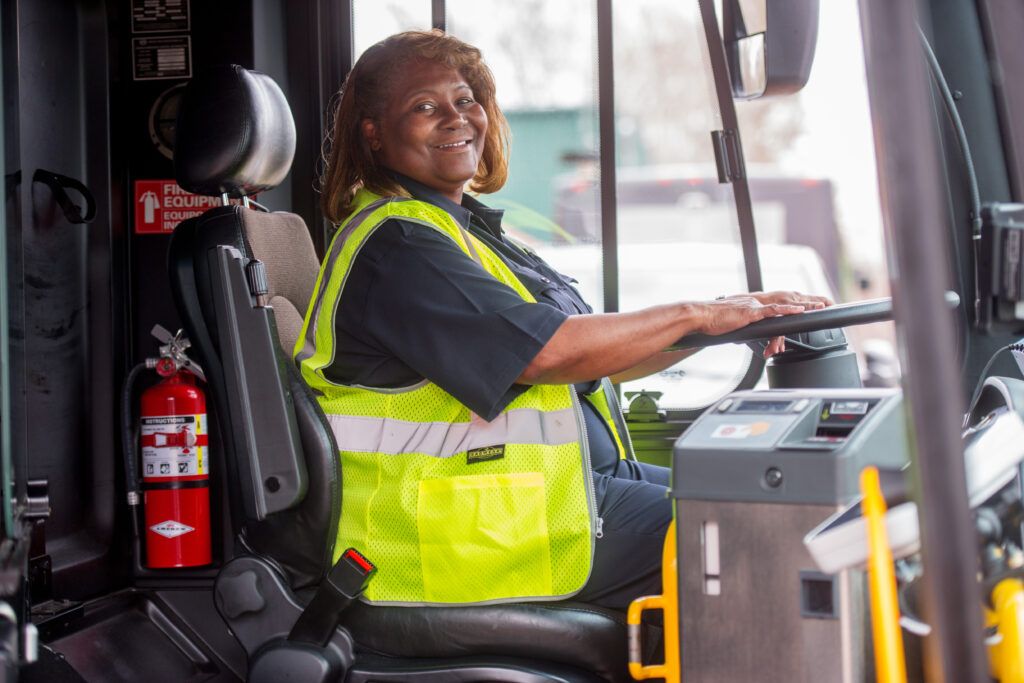For over three decades, the Capital Area Transit System (CATS) has worked to improve quality of life for residents living and working in the capital region. Today, with connections to 225,000 jobs located within a half mile of a transit route throughout, CATS’ role as a community partner is more integral than ever as Baton Rouge’s current systems and infrastructure continue to develop.
“Just last fall, the citizens of Baton Rouge and Baker voted to renew the millage that serves as CATS’ primary funding source, and we are so incredibly thankful for the opportunity to continue providing services to residents who rely on transit,” said Bill Deville, CATS CEO. “We made promises to our community for the next 10 years, and we look forward to upholding these promises through continuous improvement, exciting new projects and advancements, and ongoing partnerships that allow us to have a direct economic and community impact.”
AT A GLANCE
Top executives: Bill Deville, Chief Executive Officer; Dwana Williams, Chief Operating Officer; John Cutrone, Comptroller
Phone: [225] 389-8920
Website: brcats.com
CATS’ partner organizations not only support the transit system, but also offer critical thought leadership on how to shape the future of the city. From the Baton Rouge Area Foundation, to the Baton Rouge Area Chamber to the East Baton Rouge school system, to area healthcare facilities and other business leaders, collaborating with community partners allows CATS to find and address solutions to the area’s transportation challenges.
“It was a huge win for CATS to help attract the Amazon facility to the greater Baton Rouge area by offering transit services for their new workers,” said Dwana Williams, CATS Chief Operating Officer. “And we’re equally excited to work with BRAF on planning for the needs of travelers who will use the commuter rail service between Baton Rouge and New Orleans—a project expected in the next year or two.”
With a recently adopted strategic plan and capital improvement investment plan, CATS has drafted a roadmap for how to grow and improve the transit system, in coordination with city-wide improvement and development projects, to support the transportation needs of Baton Rouge residents and travelers over the next decade.
“As Baton Rouge continues to progress and evolve, including a population explosion and the revitalization of downtown, so does CATS alongside it,” said Deville. “We know CATS can offer alternative and efficient ways to travel across the city, so CATS is constantly looking for areas of improvement or adaptability. For example, we’re now looking at major roadwork on the I-10/I-12 split, which we know will affect an already congested route for many commuters.”
In the immediate future, CATS plans to expand transportation services to connect passengers at drop-off points for easier commutes and the opportunity for extended reach through ride-share commuter services and microtransit. CATS’ microtransit pilot service kicks off this summer in the city of Baker and north Baton Rouge.
“During the peak of the pandemic, we were all reminded of how important transit services are for the healthcare, hotel and restaurant sectors, and of the vital role CATS plays as a community partner,” said Cheri Soileau, CATS Director of Planning, Scheduling, and Program Development. “More recently, with skyrocketing gas prices, road work, and driving fatigue, CATS gives residents a safe and affordable alternative to driving.”
As CATS continues to work with partners at the local, state, and national level, the agency is ambitious about new capital projects and development opportunities in the capital area that will carry Baton Rouge into the future. CATS is proud to be a community partner, providing essential services and driving economic growth for the region.
“As we identify ways to expand and improve our system, we will be asking the community to tell us what you want, how you want it, and when you want it,” said Theo Richards, CATS Director of Business Development. “What you’re seeing now is just the beginning. Our primary goal is to identify transportation obstacles and work around them so our city will continue to thrive.”
